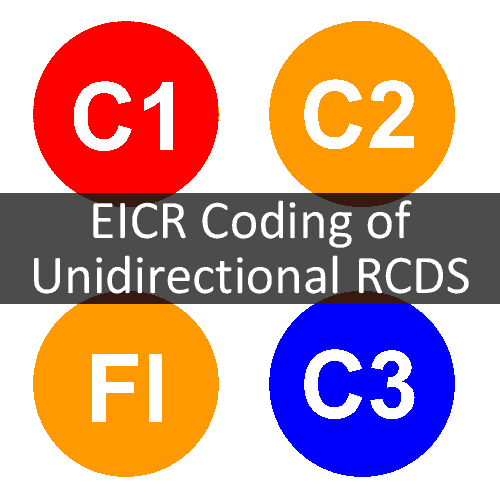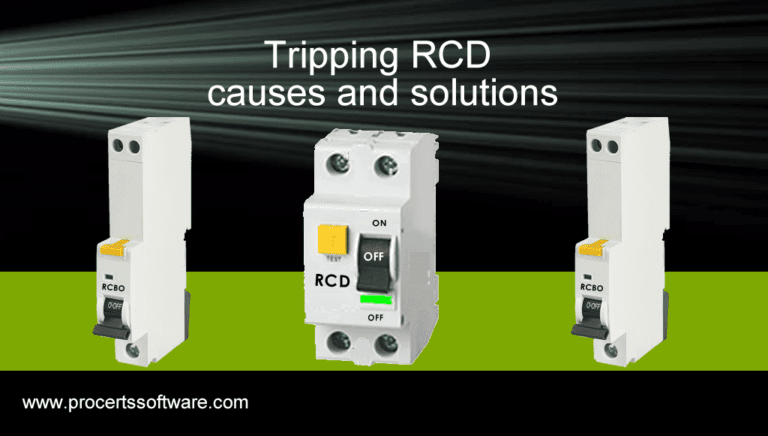Electrical Installation Condition Report (EICR)
Every thing you need to know about what an Electrical Installation Condition Report is, do I need one, is it a legal requirement, as well as how much does an EICR cost or how long should it take.
An EICR is a requirement of BS 7671 Wiring Regulations and should be carried out at regular intervals, see EICR Frequency of Inspections for guidance on how often an inspection should be carried out.
For the detailed specific requirements of actually carrying out Electrical Installation Condition Reports see IET Guidance Note 3: Inspecting & Testing.–
An electrical inspection should only be carried out by suitably qualified and competent electricians with knowledge and experience in the type of installation being inspected and tested.
Contents:
- What is an EICR Electrical Installation Condition Report?
- Do I need an Electrical Installation Condition Report?
- Is an Electrical Installation Condition Report a Legal Requirement?
- How much does an EICR cost?
- How long does an EICR take?
- Electrical Installation Condition Reporting Software
What is an EICR?
EICR = Electrical Installation Condition Report.
An EICR is a document that is produced and issued by an electrician after they have completed an electrical inspection and testing of an electrical installation, types of electrical installations covered by an EICR include (but not limited to) domestic, commercial and industrial installations.
An EICR consists of a thorough inspection and a sequence testing of your electrical installation using suitable electrical testing equipment and a EICR produced, the report will include the test results along with a list of any identified observations (defects).
The simplest way to explain what an EICR is, is to compare it to an MOT for your car.
– What does an EICR contain?
The EICR will specify the extent of the installation covered by the report and will note any limitations, the report will also include the actual test results of the electrical testing procedures carried out along with a list of observations identified during the inspection.
– Electrical Installation Condition Report Observation Codes
The EICR observations noted on the report will be allocated a code depending on the seriousness of the observation, the EICR codes include, C1 (Danger Present), C2 (Potentially Dangerous), FI (Further Investigation Required), C3 (Improvement Recommended) and in some cases may include just a “NOTE”.
If an observation is allocated a C1, C2 or FI code, then this will deem the installation as “Unsatisfactory”, a code C3 is like an equivalent of an MOT advisory.
A “NOTE” is generally just an observation worthy of noting on the report as to inform the client of something the inspector believes is worthy of mentioning, this may or may not be related to the electrical installation, an example of a “Note” might be just be to inform the client that the smoke alarms are past their replacement by date.
EICR Software
We offer a well regarded EICR software package which can be used for producing EICRs, EICs and Electrical Minor Works Certificates, you can find further info here → Electrical Installation Condition Reporting Software

EICR Software for iPad, Android Tablets and Windows.
Do I need an Electrical Installation Condition Report?
The short answer is yes, you require an Electrical Installation Condition Report for various reasons, including the following:
BS 7671 IET Wiring Regulations, Section 652 states:
The frequency of periodic inspecting and testing of an installation shall be determined having regard to the type of installation and equipment, its use and operation. . .
IET Guidance Note 3 Section 3.7, Table 3.2 offers guidance on the “maximum duration” between inspections, the inspector may specify a duration lower than that shown in Guidance Note 3, the inspectors decision is influenced by the age and current condition of the electrical installation.
Buildings Insurance: Many insurance companies may specify that a “Satisfactory” Electrical Installation Condition Report is obtained as per the terms and conditions of their insurance cover policy.
The Electricity at Work Regulations 1989: The purpose of this guidance is to highlight what can be done by duty holders to achieve electrical safety compliance with the duties imposed by the Regulations. For further information see The Electricity at Work Regulations 1989 Guidance. from the Health & Safety Executive.
Health and Safety at Work etc Act 1974: An Act to make further provision for securing the health, safety and welfare of persons at work, for protecting others against risks to health or safety in connection with the activities of persons at work…
The Electrical Safety Standards in the Private Rented Sector (England) Regulations 2020: These Regulations may be cited as the Electrical Safety Standards in the Private Rented Sector (England) Regulations 2020, these Regulations came into force on 1st June 2020. For further information see UK Statutory Instruments 2020 No. 312
For private rented accommodation see A Landlords Guide to Electrical Safety for details on Landlord responsibilities in respect of electrical safety in rented properties.
Mortgage Surveyor: A mortgage surveyor or lender may request that an Electrical Installation Condition Report is carried out. Many mortgage companies like to ensure the property they are lending on is electrically safe and the risk of the building catching fire due to faulty electrics is low.
Property Purchase: If you are looking to purchase a property, be that a commercial, industrial or a domestic property, it is in your best interest to get an Electrical Installation Condition Report carried out first.
Failure to have an EICR carried out could result in you purchasing a property which is in need of an expensive full rewire or extensive remedial works. To put it this way, would you purchase a car without an an MOT? probably not.
Is an Electrical Installation Condition Report a Legal Requirement?
While BS 7671 Wiring Regulations are not statuary, The Electricity at Work Regulations 1989 is statuary and is made under Section 15 of the Health and Safety at Work Etc. Act 1974.
BS 7671 and the IET/IEE Wiring Regulations have been extensively referred to in HSE guidance over the years. Installations which confirm to the standards laid down in BS 7671 (current edition) are regarded by HSE as likely to achieve conformity with the relevant parts of the Electricity at Work Regulations 1989. Source: BS 7671 – Note by the Health and Safety Executive
Whether an Electrical Installation Condition Report is a “legal requirement” or not is for others to decide, we can not offer legal advice.
However, legal requirement or not, why would you not want to get an Electrical Installation Condition Report carried out? Surely if you are a responsible property owner, landlord, the responsible person or duty holder for a building, you would want to ensure the electrical installation is safe and fit for continued use, therefor not putting the building occupants and its assets at risk or danger from fire, electric shock, burns or worse.
How much does an EICR cost?
The cost of an Electrical Installation Condition Report (EICR) varies and depends on many variable factors.
Electrical contractors have varying ways for pricing Electrical Installation Condition Report jobs, some may price it on a £ per circuit basis, while others may simply apply a labour rate for how long they think the inspection will take to complete.
Factors relating to EICR costs include,
- Number of final circuits.
- Number of distribution circuits.
- Does the EICR need to be carried out, out of hours (at night).
- Is powered access equipment required (i.e. to reach high level lighting).
- Is the building/property occupied or not.
- Estimated time the EICR is likely to take.
- Estimated time to produce the actual report is likely to take (generally for larger installations).
- Restrictions to access (i.e. access to areas as and when required or not).
- Restrictions on isolating circuits (i.e. being able to isolate circuits as and when required or not).
- Number of persons (Electrical Inspectors) required to complete the works.
If you are arranging an Electrical Installation Condition Report to be carried out at your property it is worth having a discussion with the electrical contractor to ensure it goes as smoothly as possible.
Try to assist and accommodate the contactor appointed to carry out the electrical inspection as much as possible, reducing restrictions/limitations as to not hinder the inspection, otherwise the electrical inspection could take longer than necessary which will push up the costs.
How long does an EICR take?
An Electrical Installation Condition Report generally takes between 4 to 8 hours, but the time it takes to carry out an Electrical Installation Condition Report varies and is dependent on the factors mentioned in the How much does an EICR cost section above.
As a general rule of thumb, for an average sized 3 bedroom property the duration of the EICR (inspection and testing) will take between 4 to 6 hours (if no previous records are available) to do it properly.
If any one suggests an EICR for an average sized 3 bedroom property only takes an hour or so, then be cautious. In the trade these types of inspections are referred to as “Letter Box” or “Drive By” inspections and they are normally very very basic limited inspections with poor EICR reports, hence the terms “Letter Box Inspections” or “Drive By Inspections”, comparing it to they may as well have just taken a look through the letter box or just driven by.
How often must I get an EICR
The duration between EICR’s will depend on the age, condition and type of installation. The older the installation is will likely require more frequent inspections.
The maximum permissible duration between EICRs is set by the wiring regulations, an EICR frequency of inspections table lays out the different maximum time spans between inspections for different types of electrical installations.
Note that the frequency of inspections table is the maximum duration, an electrician can set the next inspection duration from anything “up to” the maximum duration.






